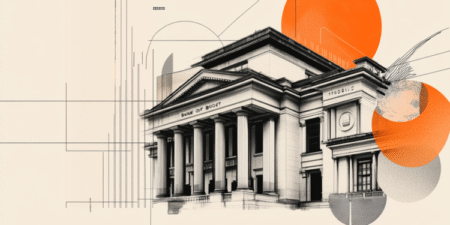- The US Consumer Price Index is forecast to rise 2.6% YoY in March.
- The core CPI inflation is seen a tad lower at 3% last month.
- The inflation data could influence the Fed’s rate outlook and the US Dollar’s performance.
The United States (US) Bureau of Labor Statistics (BLS) is set to publish the high-impact Consumer Price Index (CPI) inflation report for March on Thursday at 12:30 GMT.
The CPI figures could notably impact the US Dollar (USD) and the Federal Reserve’s (Fed) monetary policy outlook.
What to expect in the next CPI data report?
As measured by the CPI, inflation in the US is set to rise at an annual pace of 2.6% in March, down slightly from the 2.8% reported in February. Core CPI inflation, which excludes the volatile food and energy categories, is expected to ease to 3% in the same period from a year earlier, compared to a 3.1% growth in the previous month.
On a monthly basis, the CPI and the core CPI are projected to rise 0.1% and 0.3%, respectively.
Previewing the report, analysts at TD Securities noted: “We expect this week’s CPI report to show that core inflation maintained a still firm 0.26% m/m pace in March following the cooler than expected expansion in the last report. In the details, we look for goods inflation to cool down after two consecutive firm increases while services prices likely gained some momentum.”
“In terms of the headline, we project CPI inflation to ease again to a mild 0.07% m/m in March, led by a considerable contraction in the energy component. We also expect food inflation to lose additional momentum, printing flat m/m,” TD Securities analysts added.
Economic Indicator
Consumer Price Index (MoM)
Inflationary or deflationary tendencies are measured by periodically summing the prices of a basket of representative goods and services and presenting the data as The Consumer Price Index (CPI). CPI data is compiled on a monthly basis and released by the US Department of Labor Statistics. The MoM figure compares the prices of goods in the reference month to the previous month.The CPI is a key indicator to measure inflation and changes in purchasing trends. Generally, a high reading is seen as bullish for the US Dollar (USD), while a low reading is seen as bearish.
Read more.
How could the US Consumer Price Index report affect EUR/USD?
Markets are growing increasingly concerned over the US economy tipping into recession due to expectations of the global trade conflict triggered by US President Donald Trump’s aggressive tariffs weighing heavily on economic activity. In turn, the Federal Reserve (Fed) is now projected to take a dovish turn. According to the CME FedWatch Tool, markets are currently pricing in about a 37% probability of the Fed lowering the policy rate by 25 basis points (bps) at the May policy meeting, up from 10% on April 1.
Fed policymakers, however, put more emphasis on the potential impact of tariffs on inflation rather than the growth outlook in their recent speeches. “The Fed’s obligation is to make certain that a one-time increase in price levels doesn’t become an ongoing inflation problem,” Fed Chairman Jerome Powell said. Similarly, San Francisco Fed President Mary Daly said that she is concerned that inflation may pick back up from tariffs, while Chicago Fed President Austan Goolsbee noted that there is anxiety among businesses that high inflation will return.
The market positioning suggests that the USD is facing a two-way risk heading into the inflation data release. A stronger-than-expected annual headline CPI print could feed into expectations for a Fed policy hold in May and boost the USD with the immediate reaction. On the other hand, a reading at or below 2.5% in this data could weigh on the USD and help EUR/USD continue to push higher.
Eren Sengezer, European Session Lead Analyst at FXStreet, offers a brief technical outlook for EUR/USD and explains:
“The Relative Strength Index (RSI) indicator on the daily chart holds above 60 and EUR/USD trades above the 20-day Simple Moving Average (SMA) after testing this level several times in the past week, reflecting a bullish bias in the near term.
“On the upside, 1.1150 (static level) aligns as the next resistance before 1.1200 (static level) and 1.1275 (July 2023 high). Looking south, the first support could be spotted at 1.0880 (20-day SMA) ahead of 1.0800 (static level) and 1.0740 (200-day SMA).
US Dollar FAQs
The US Dollar (USD) is the official currency of the United States of America, and the ‘de facto’ currency of a significant number of other countries where it is found in circulation alongside local notes. It is the most heavily traded currency in the world, accounting for over 88% of all global foreign exchange turnover, or an average of $6.6 trillion in transactions per day, according to data from 2022.
Following the second world war, the USD took over from the British Pound as the world’s reserve currency. For most of its history, the US Dollar was backed by Gold, until the Bretton Woods Agreement in 1971 when the Gold Standard went away.
The most important single factor impacting on the value of the US Dollar is monetary policy, which is shaped by the Federal Reserve (Fed). The Fed has two mandates: to achieve price stability (control inflation) and foster full employment. Its primary tool to achieve these two goals is by adjusting interest rates.
When prices are rising too quickly and inflation is above the Fed’s 2% target, the Fed will raise rates, which helps the USD value. When inflation falls below 2% or the Unemployment Rate is too high, the Fed may lower interest rates, which weighs on the Greenback.
In extreme situations, the Federal Reserve can also print more Dollars and enact quantitative easing (QE). QE is the process by which the Fed substantially increases the flow of credit in a stuck financial system.
It is a non-standard policy measure used when credit has dried up because banks will not lend to each other (out of the fear of counterparty default). It is a last resort when simply lowering interest rates is unlikely to achieve the necessary result. It was the Fed’s weapon of choice to combat the credit crunch that occurred during the Great Financial Crisis in 2008. It involves the Fed printing more Dollars and using them to buy US government bonds predominantly from financial institutions. QE usually leads to a weaker US Dollar.
Quantitative tightening (QT) is the reverse process whereby the Federal Reserve stops buying bonds from financial institutions and does not reinvest the principal from the bonds it holds maturing in new purchases. It is usually positive for the US Dollar.
Read the full article here
















